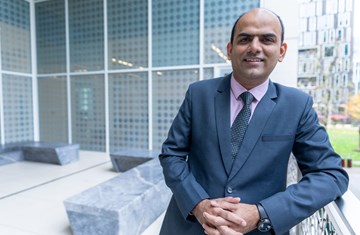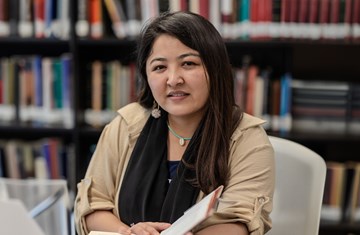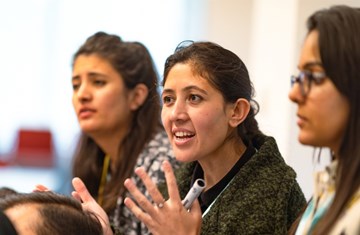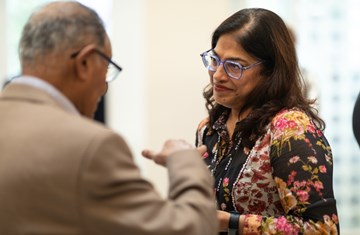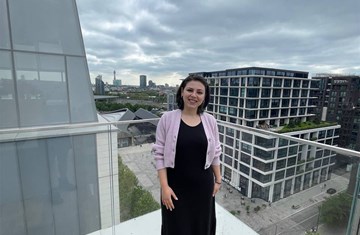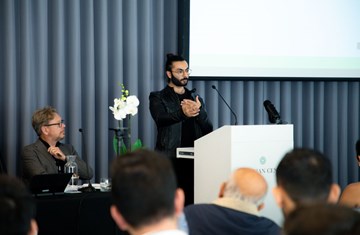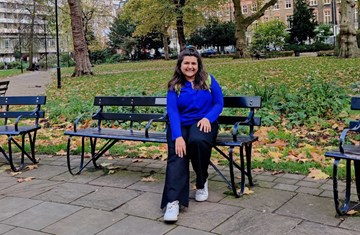GPISH and STEP Students Visit Historical Sites in Spain
Students from the Class of 2011 of the Secondary Teacher Education Programme (STEP) and the Class of 2011 of the Graduate Programme in Islamic Studies and Humanities (GPISH) recently embarked upon an educational trip to southern Spain. This annual trip allows students to experience at first hand the historical roots of Islam in Europe.
The students were accompanied on this trip by Dr Elizabeth Lambourn, GPISH Lecturer, Dr Miriam Ali de Unzaga, Independent Researcher and GPISH alumna and Dr Farouk Mitha, STEP Course Director. The group began their journey in Granada and took part in a walking tour of the historic district of Albaycin, located on a hill opposite the Alhambra. Since 1994, both areas have been designated world heritage sites. The Albaycin is a spectacular example of Moorish vernacular architecture, combined with traditional Andalusian construction techniques. The area is famous for the remains of medieval houses, mosques and baths. The students visited many historical sites such as the Mirador San Nicolas, the Church of Santa Ana, and the newly restored Caravanserai as well as the Islamic Cultural Centre.
This was followed by a visit to the vast palace complex of the Alhambra, whose name derives from the Arabic al-Hamra, the ‘red fortress’. Most of it was constructed by the Moorish rulers of the Nasrid Dynasty in the thirteenth and fourteenth centuries. One of Spain’s major tourist attractions, it is seen as one of the most beautiful examples of Muslim architecture, with its magnificent decorative schema of arabesques, calligraphic inscriptions and geometric designs. The visit provided students with an opportunity to appreciate this Moorish building, the later Christian additions constructed by King Charles V in the sixteenth century, and the nearby gardens of the Generalife.
The combination of slender columns, fountains and water basins in the Alhambra, such as those in the Lion Court, is understood from inscriptions to be a physical realisation of the descriptions of Paradise in Muslim poetry. The students also attended an afternoon workshop within the Alhambra site to reflect on Islamic epigraphy and poetry.
The students’ next destination was Cordoba, where their first stop was the Great Mosque. The hypostyle mosque is seen as a pre-eminent example of medieval architecture and a primary religious and cultural relic of al-Andalus. It was begun in the late eighth century by the Umayyad ruler, ‘Abd al-Rahman I. The mosque is also of great historical significance, visually depicting Cordoba’s religious and societal changes. Today, it is also the site of Cordorba’s Cathedral. With its enclosed courtyard and rectangular prayer hall, the Mosque follows a tradition established in the Umayyad and Abbasid mosques of Syria and Iraq. Its system of columns supporting a double arcade of piers and arches is celebrated for its harmony, balance and dramatic use of light.
The students took part in a workshop on the ‘Ground Plans and Building Fabric of the Great Mosque’. This was a visual exercise testing their ability to work out where the Great Mosque had been extended.
One of the STEP students commented that the trip allowed them to visualise what they learned whilst on the course, and went on to say that: “One thing that stood out to me about the Great Mosque of Cordoba and the Cathedral, is that religion never ends; it is continuous and through this architecture the faiths of the builders speak.” Whilst in Cordoba, the students also took a tour of the Old City, which included the Synagogue, Alcazar and the Jewish Quarter.


